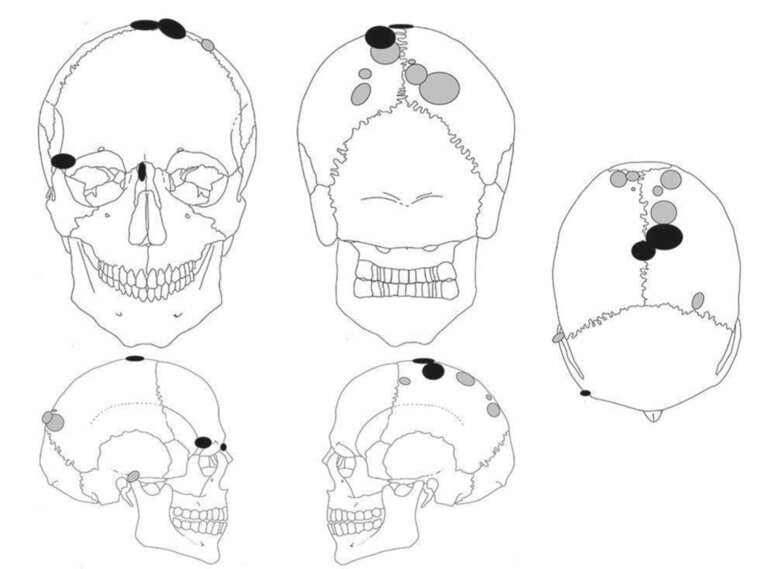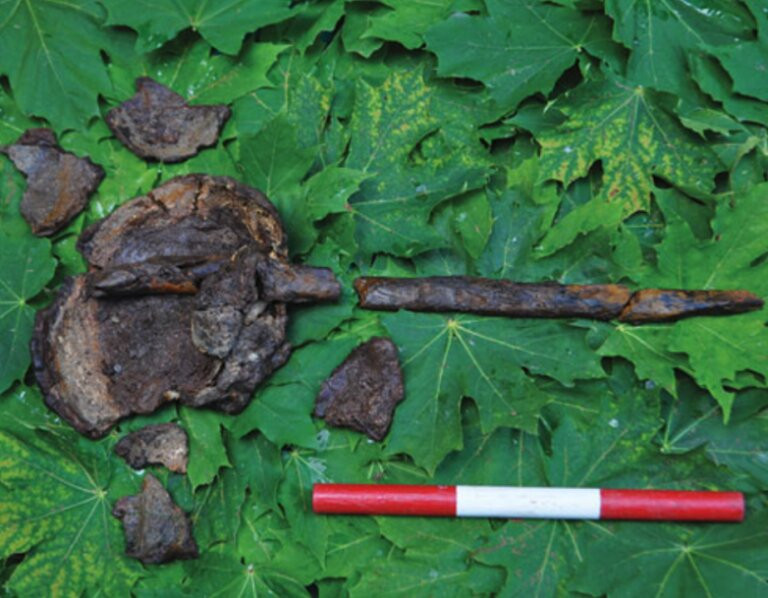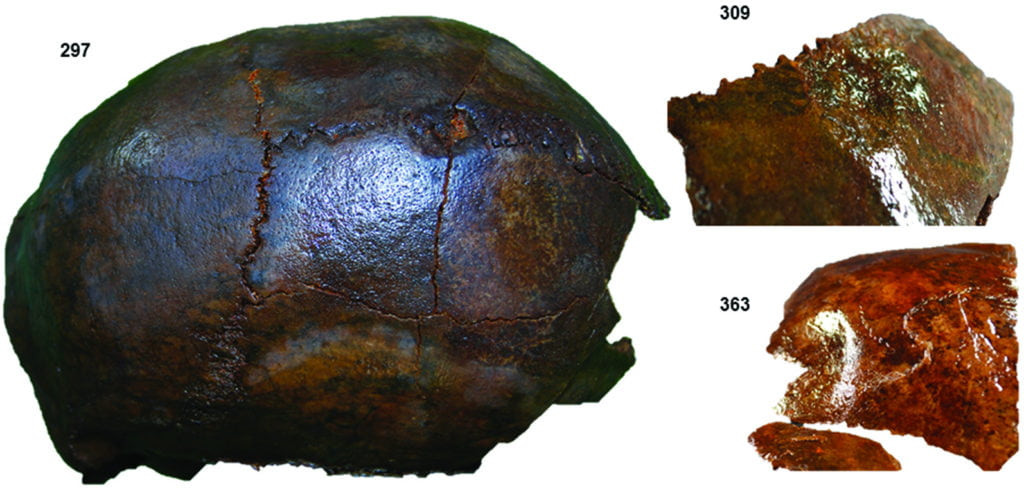A Grim Finding That Challenges Our Understanding

Researchers in Sweden have made an astonishing discovery that defies our current knowledge of Mesolithic hunter-gatherers in Europe. At an 8,000-year-old burial site near the Motala Ström river, archaeologists uncovered evidence of decapitated human skulls mounted on wooden stakes – a behavior never before witnessed in ancient hunter-gatherer societies.
The Archaeological Site and Its Gruesome Secrets

The Kanaljorden excavation site, situated at the bottom of what was once a lake, has been under investigation since 2009. Amid butchered animal bones, tools crafted from antlers, and wooden stakes, archaeologists stumbled upon the remains of ten individuals – nine adults and one infant – deliberately placed atop a densely packed layer of large stones.
Blunt Force Trauma and Gender-Based Violence

All of the adult skulls exhibited signs of blunt force trauma before death, with injuries varying according to gender. The two female skulls showed trauma to the back and right side of their heads, while the males displayed single traumatic events to the top of the head or face. Some skulls even bore signs of prior injuries and subsequent healing.
The Chilling Discovery: Heads on Stakes

Perhaps the most chilling discovery was that three of the male skulls exhibited signs of sharp force trauma after death, with well-preserved wooden stakes found dislodged within two of them. In one case, the wooden spike was still protruding from the bone, suggesting these heads had been mounted on stakes before being deposited in the lake.
Theories and Unanswered Questions
Warfare, Violence, or Cultural Rituals?

The researchers posited several potential explanations for the blunt force trauma and the mounting of heads on stakes. These include accidental injuries (highly unlikely), social violence, forced abduction, spousal abuse, warfare, socially sanctioned non-lethal violence, or even cultural rituals involving self-inflicted injuries.
A Glimpse into the Mesolithic World
While the reasons behind these practices remain shrouded in mystery, one thing is clear: this discovery challenges our understanding of Mesolithic hunter-gatherer societies and the way they treated their dead. As the lead author Anna Kjellström stated, “We won’t understand more until additional research is done, and until more bones and artifacts are uncovered. However, one thing’s for sure—we’ll never look at hunter-gatherers the same way again.”
